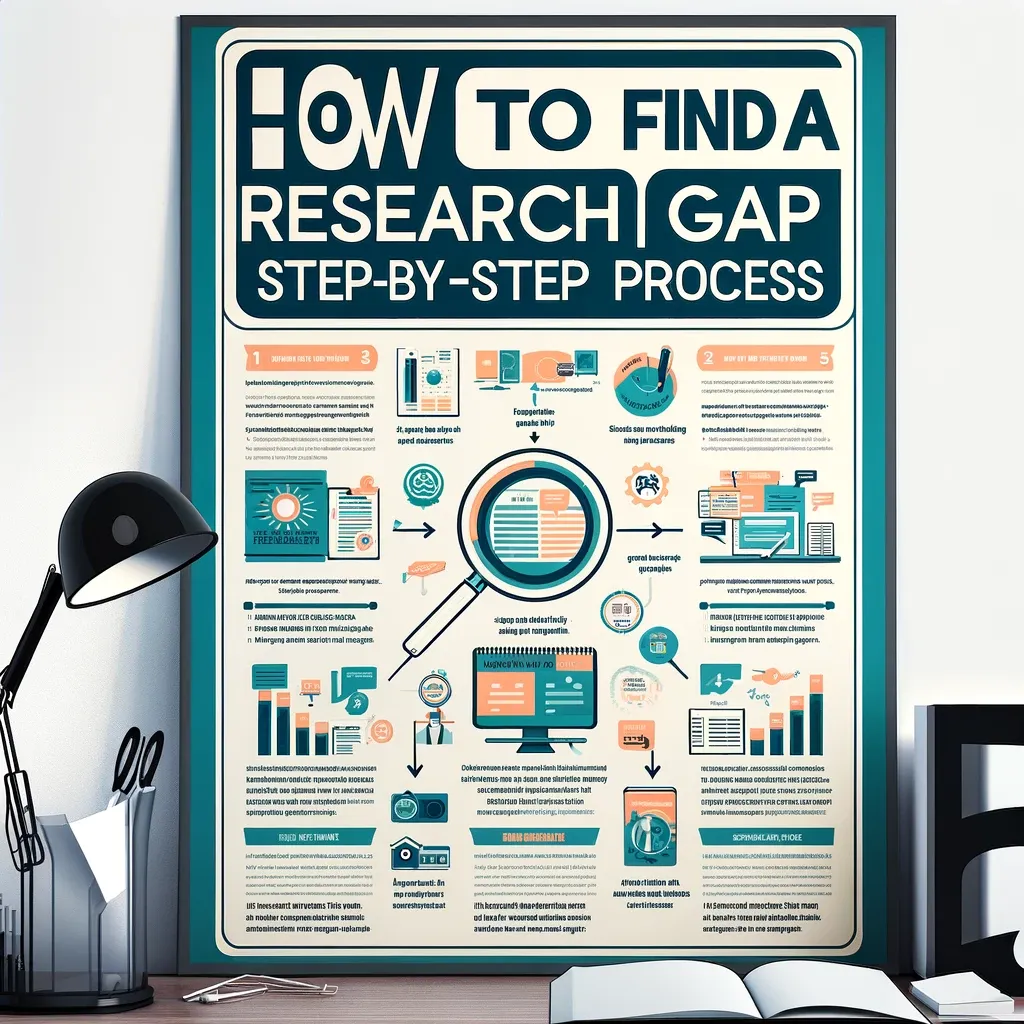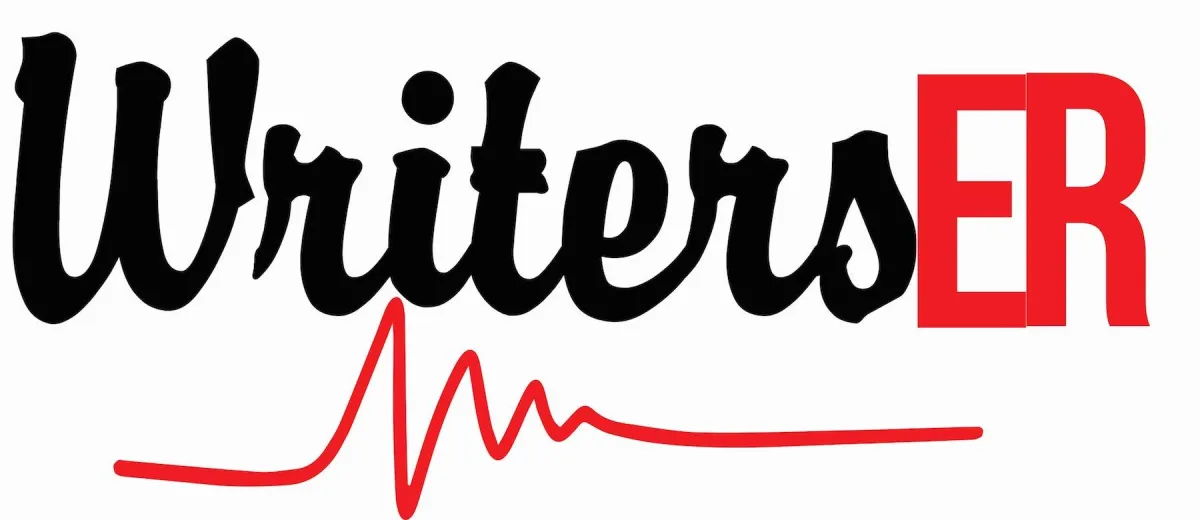BLOGS

How To Find A Research Gap: Step-By-Step Process
How To Find A Research Gap: Step-By-Step Process
Introduction
In the ever-expanding world of academic research, standing out with a unique contribution is akin to finding a needle in a haystack. Yet, the key to academic distinction lies not just in what you research, but in identifying the elusive 'research gap'. This comprehensive guide will lead you through a step-by-step process, equipping you with the tools to uncover these hidden gems in your field. Whether you’re a master's student, a PhD candidate, or at any stage of your academic journey, understanding how to find a research gap is essential for making a meaningful contribution to your discipline.

Understanding the Research Gap
Defining the Research Gap
In academic circles, the term 'research gap' is more than just jargon; it's a beacon guiding scholars to uncharted territories of knowledge. But what exactly is a research gap? At its core, a research gap is an unexplored or under-explored area within a field of study. It could be a question that hasn't been asked, a hypothesis not yet tested, or a perspective overlooked in existing literature. The challenge lies in not just finding any gap, but in finding one that is both significant and feasible to explore.
To begin identifying a research gap, start with a broad understanding of your field. Read widely and critically. Pay attention to the concluding sections of research papers where authors often suggest areas for further study. These recommendations can be goldmines for identifying potential gaps. Additionally, look for inconsistencies or contradictions in the literature. Where there's disagreement, there's often a gap waiting to be filled.
Identifying a research gap requires a balance of creativity and analytical skills. It's about connecting dots that haven't been connected before or seeing patterns that others have missed. It's about asking new questions or revisiting old ones with a fresh perspective. The process can be daunting, but it's also what makes academic research exciting and fulfilling.
The Importance of a Research Gap in Academic Research
Why is finding a research gap so crucial? In the world of academia, the significance of a research gap cannot be overstated. It's the starting point of any meaningful research endeavor. A well-identified gap not only sets your research apart but also ensures its contribution to the body of knowledge.
A research gap signals to your peers and to the broader academic community that your work addresses something previously overlooked or insufficiently explored. It demonstrates the originality and relevance of your study, two key criteria for the value of academic work. Moreover, funding bodies and academic journals often look for research that fills a significant gap, making the identification of such gaps critical for securing research grants and publishing your work.
Furthermore, identifying a research gap helps in focusing your research efforts. It narrows down the vast field of potential research topics to a manageable, targeted area, thus making your research more efficient and effective. It also aids in formulating clear and concise research questions, hypotheses, and objectives, which are essential for a structured and systematic approach to your research.
In essence, the identification of a research gap is not just a preliminary step in the research process; it's a strategic move that defines the trajectory and impact of your academic journey. By highlighting a gap, you're not just filling a void in the literature; you're potentially paving the way for new theories, methodologies, and applications in your field.
Conducting a Thorough Literature Review
The foundation of finding a research gap is a thorough literature review. This is where you immerse yourself in the existing body of knowledge in your field to understand what has been done, what has been said, and, importantly, what has not been done or said. A literature review is not just a summary of existing research; it's a critical analysis that identifies patterns, themes, strengths, and weaknesses in the literature.
To conduct an effective literature review, start by defining your scope. What is the time frame of the literature you will review? Which geographical areas or populations will you focus on? What are the key concepts and theories you need to explore? Answering these questions will help in creating a structured approach to your literature review.
Use a variety of sources for your review, including academic journals, books, conference proceedings, and reputable online databases. Be systematic in your search. Use keywords and Boolean operators to refine your search results. Take meticulous notes and organize them effectively. Tools like Zotero or Mendeley can be invaluable for managing your references.
As you review the literature, look for gaps in knowledge, methodological weaknesses, areas of controversy, or unanswered questions. Be critical and ask yourself: What's missing? What could be done differently? What are the limitations of the current research? Your goal is to identify where your research can add value and provide new insights.
Remember, a literature review is an ongoing process. As you progress in your research, keep updating your literature review. This will ensure that your research remains relevant and grounded in the current state of knowledge in your field.
The Step-by-Step Process of Finding a Research Gap
Analyzing Trends and Current Research Themes
To effectively identify a research gap, one must be well-versed in the current trends and themes dominating their field. This means staying abreast of recent developments, breakthroughs, and ongoing debates within your area of study. Analyzing these trends not only provides a backdrop against which to compare your own research interests but also highlights areas that are currently under scrutiny or in need of further exploration.
Begin by examining the most cited papers in your field over the last few years. These papers often set the agenda for what is considered important and relevant. Look for patterns in the topics being discussed, methodologies being used, and conclusions being drawn. Are there certain areas that are receiving a lot of attention? Conversely, are there topics that seem to be overlooked?
Next, attend academic conferences, webinars, and seminars relevant to your field. These platforms are often where the latest research is presented and where future research directions are debated. Pay attention to the questions raised during these events, as they can provide insights into potential research gaps.
Also, consider the broader societal, technological, and economic trends that might influence your field of research. Sometimes, research gaps emerge from changes in society or advancements in technology that have not yet been fully explored in academic literature. Keeping an eye on these external factors can provide you with a unique angle from which to approach your research.
Identifying Areas of Controversy or Incomplete Knowledge
Areas of controversy or incomplete knowledge are fertile grounds for identifying research gaps. Such areas are characterized by conflicting findings, debates, or a lack of consensus among scholars. Identifying these areas requires a critical eye and an ability to engage deeply with the literature.
Start by looking for studies with conflicting results or conclusions. When researchers disagree, it often indicates an underlying complexity or a missing piece of the puzzle in understanding a particular topic. Read these studies carefully and try to understand the reasons behind the differing viewpoints. This may involve delving into the methodologies used, the theoretical frameworks applied, or the data sets analyzed.
Another approach is to look for questions that are being asked repeatedly in the literature but have not yet been satisfactorily answered. These recurring questions can point to areas where further research is needed. Also, pay attention to calls for research made by authors in their papers. These calls often highlight specific aspects of a topic that require more in-depth exploration.
Lastly, don't overlook the importance of methodologies. Sometimes, the gap is not in what is being studied but in how it's being studied. Are there new methods or technologies that could be applied to your field of study? Could existing theories be tested in different contexts or with different populations? Exploring these possibilities can lead you to valuable research gaps.
Narrowing Down Your Focus
Once you've identified a potential research gap, the next challenge is to narrow down your focus. A well-defined research question is specific, clear, and manageable. It should be broad enough to be significant but narrow enough to be answerable within the scope of your research project.
Begin by considering the feasibility of your research. Do you have access to the necessary resources, data, and expertise to explore this gap? Is it possible to complete your research within the given time frame? These practical considerations are crucial in shaping your research question.
Next, refine your research question by focusing on specific aspects of the gap you've identified. This might involve concentrating on a particular geographic area, population group, time period, or set of variables. The key is to find a balance between being too broad (which can make your research unfocused) and too narrow (which can limit its significance).
Also, consider the implications of your research. What will answering this research question contribute to your field? How does it advance knowledge, inform practice, or influence policy? Keeping these broader impacts in mind can help in sharpening your research focus.
In narrowing down your focus, be prepared to iterate and refine your research question as you delve deeper into the literature and your understanding of the topic evolves. This is a normal part of the research process and is essential for developing a strong, focused research question.

Refining Your Research Question
Ensuring Originality and Relevance
Striking the right balance between originality and relevance is essential in academic research. Your study should not only add something new to the existing body of knowledge but also resonate with current academic and real-world concerns. This dual focus ensures that your work is both innovative and impactful.
To ensure originality, always cross-reference your proposed research question against existing literature. Has this exact question been answered before? If similar studies exist, consider how your approach differs. Could you use a different methodology, target a different demographic, or apply a different theoretical framework? It’s these nuances that can set your research apart.
Relevance is equally crucial. Your research should address a question that matters in the contemporary context of your field. This could be a societal issue, a technological advancement, or an emerging trend. The relevance of your research increases its chances of being recognized, cited, and used by other scholars and practitioners.
Remember, originality and relevance often feed into each other. An original study can spark new discussions and open up new areas of relevance, while relevant research can lead to fresh, original insights. Maintaining this balance is key to formulating a robust and meaningful research question.
Conclusion
Summarizing the Journey and Next Steps
Embarking on the journey to identify a research gap is a crucial step towards academic success and contribution. This guide has walked you through understanding what a research gap is, why it's important, and how to find one through a systematic step-by-step process. You've learned to conduct a thorough literature review, analyze current trends and areas of controversy, narrow down your focus, and ensure that your research question strikes a balance between originality and relevance.
Remember, identifying a research gap is just the beginning. The next steps involve detailed planning, rigorous research, and effective communication of your findings. As you move forward in your academic journey, keep refining your approach, stay curious, and remain open to new insights.
If you need support in navigating these next steps, WritersER is here to assist. We specialize in helping masters, PhD, and doctoral candidates accelerate their academic progress. Schedule an admission interview with us, and let's work together to reach your next academic milestone in six months or less. Your journey towards academic excellence is just a consultation away. Click here to get started!
